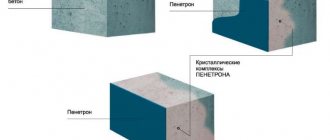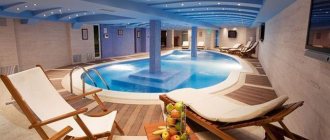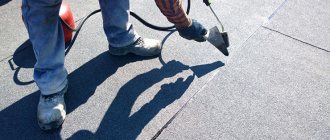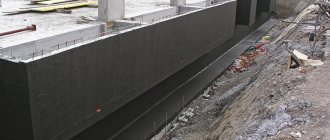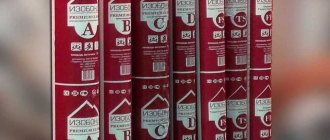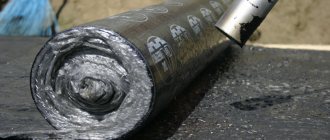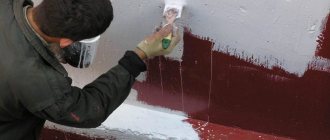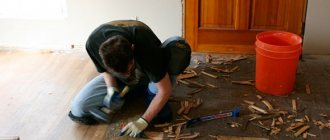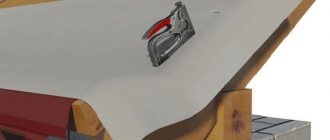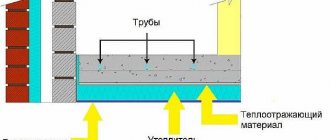Waterproofing material Penetron is suitable for both new and old structures
Do you need to protect your concrete or brick surface from moisture? Penetrating waterproofing Penetron is a simple and effective option that will help you make your walls, floors and foundations waterproof. I will tell you what the composition is and share my experience of applying it.
Penetron is sold as a dry composition in packages of various types and capacities. It is better to choose plastic buckets, they preserve the composition much better
What is Penetron
The dry mixture called “Penetron” was developed, patented and produced by the company of the same name. The name comes from the Latin word penetro, which means “to penetrate.” It includes:
- cement;
- fine quartz sand;
- special chemical additives.
The mixture belongs to the category of penetrating waterproofing. It protects concrete and reinforced concrete structures from moisture and aggressive environments, and increases their strength. With its use, corrosion of reinforcement is significantly reduced, the material becomes less susceptible to frost, therefore, it is less destroyed, and its service life increases.
The main component of the mixture are active additives that form moisture-proof structures inside the concrete. Thanks to them, Pentron can penetrate to a distance of about 0.5 m from the surface. This is the best indicator among other similar materials.
Waterproofing of concrete structures
For waterproofing existing concrete structures, the Penetron material is used.
Description
Dry mixture; consists of special cement, quartz sand of a certain granulometry, patented active chemical components.
Purpose of the Penetron material
Waterproofing of the entire thickness of prefabricated and monolithic concrete and reinforced concrete structures, surfaces and plaster layers made of cement-sand mortar grade M150 and higher. “Penetron”
is applied to a thoroughly moistened surface of a concrete structure on any of its sides (internal or external), regardless of the direction of water pressure (positive or negative).
The use of the Penetron material makes it possible to prevent water from penetrating through the concrete structure with a width of pores and cracks up to 0.4 mm. The material is effective even in the presence of high hydrostatic pressure. Use Penetron material to eliminate and prevent capillary filtration of water through vertical and horizontal, including ceiling, concrete surfaces. The use of the Penetron material allows you to protect concrete from the effects of aggressive environments: acids, alkalis, sewage and groundwater, sea water. Concrete treated with Penetron material becomes resistant to carbonates, chlorides, sulfates, nitrates, etc., as well as bacteria, fungi, algae and marine organisms. After preparing the surface, apply a solution of Penetron material in two layers with a synthetic fiber brush or using a mortar pump with a spray nozzle. Apply the first layer to wet concrete. Apply the second layer on top of the fresh but already set first layer. Before applying the second layer, moisten the surface again. The use of the Penetron material makes it possible to increase the frost resistance and strength of concrete, as well as give it sulfate resistance. Attention! The Penetron material solution should be applied evenly over the entire surface, without gaps. The consumption of Penetron material in terms of dry mixture when applied in two layers ranges from 0.8 kg/m2 to 1.1 kg/m2. An increase in the consumption of Penetron material from 0.8 kg/m2 to 1.1 kg/m2 is possible on uneven surfaces with significant cavities or potholes.
Penetron: preparation of the composition
Mix the dry mixture with water in the following proportion: 400 grams of water per 1 kg of Penetron material, or 1 part water to 2 parts Penetron material by volume. Pour water into the dry mixture (not vice versa). Mix for 1-2 minutes by hand or using a low-speed drill. The type of prepared mixture is a liquid, creamy solution. Prepare a quantity of solution that can be used within 30 minutes. During use, stir the solution regularly to maintain the original consistency. Re-adding water to the solution is not allowed.
Restoration of horizontal waterproofing between a concrete foundation and a wall made of porous material
To restore horizontal waterproofing (eliminate capillary suction) between the concrete foundation and the wall, Penetron and Penecrit materials are used.
In a concrete foundation (from the inside or outside) in a checkerboard pattern, it is necessary to drill holes with a diameter of 20-25 mm at an angle of 30-45 degrees to the horizontal. The distance between holes horizontally is 200-300 mm, vertically - 150-200 mm. The drilling depth should be at least 2/3 of the foundation thickness. If necessary, rinse the drilled holes with water to saturate the concrete with moisture. Fill the holes with the prepared solution of Penetron material using a funnel. Carefully compact the solution into the hole. Fill the remaining space with a solution of Penecrit material. Attention! In the case of a hollow (loose) concrete structure, the foundation should first be strengthened by injecting a non-shrinking cement mortar.
Care of the treated surface
Protect treated surfaces from mechanical influences and freezing temperatures for three days. Make sure that surfaces treated with Penetron system materials remain wet for three days to prevent cracking and peeling of the coating. To moisten treated surfaces, water spray and covering the concrete surface with plastic film are usually used. When caring for a surface treated from the water pressure side, it is recommended to increase the moistening period to 14 days.
Application of decorative coating
It is recommended to apply painting and finishing materials on surfaces treated with Penetron material after 28 days.
The holding time can be reduced or increased depending on the requirements of a particular type of finishing material for the maximum permissible moisture content of concrete. Attention! Before applying a decorative coating, surfaces treated with Penetron material must be cleaned mechanically to improve adhesion using a high-pressure water jet (for materials applied to wet concrete) or a brush with metal bristles (for materials applied to a dry concrete surface).
Safety precautions
Work should be carried out wearing rubber gloves and safety glasses.
The product contains Portland cement and is irritating to eyes and skin. When mixing, avoid contact with eyes and skin; In case of contact, rinse with water. The use of Penetron system materials must be carried out in strict accordance with the Technological Regulations
for the design and implementation of works on waterproofing and anti-corrosion protection of monolithic and prefabricated concrete and reinforced concrete structures.
Application
Penetron, diluted in water, is used for waterproofing a wide variety of structures made of concrete or reinforced concrete of grade M100 and higher, as well as concrete surfaces on which cement-sand plaster of grade not lower than M150 has been applied. Example usage are:
- foundations;
- liquid storage tanks;
- basements and cellars;
- wells and mines;
- tunnels.
The size of cracks on the surface of the structure should not exceed 0.4 mm. If there are seams, joints or large cracks, then it is necessary to use Penecrit together with Penetron.
The waterproofing substance will not penetrate into brickwork, stone, foam concrete, etc. If you use it on the listed materials, the positive effect will not occur, and the degree of moisture penetration will not change. It is necessary to plaster the surface with a solution of cement and sand to obtain a high-density concrete layer, and only then begin to apply Penetron.
Applying decor after treatment with Penetron
The surface after treatment with Penetron should be coated with paint or finishing material after at least 28 days. However, the holding time may be shorter or longer depending on the requirements for a particular type of finishing material in relation to the moisture content of the concrete.
Also, before applying a decorative coating to the surface after it has been treated with Penetron, it is cleaned mechanically to improve adhesion. A brush with metal bristles or a water jet will work for this purpose.
How does it work?
After applying the waterproofing mixture to the moistened surface, its components begin to actively penetrate deep into the concrete. This happens due to osmosis - the distribution of solution molecules in the concrete structure.
There, inside the walls, concrete components (metals, oxides, salts) enter into a chemical reaction with Penetron components, and as a result, solid crystals are formed that are insoluble in water. The crystals fill thin pores up to 0.4 mm in size, after which the surface becomes waterproof to a depth of about half a meter. The more the concrete is moistened, the more active and better the chemical reaction will take place.
The advantage of this process is that the crystals become part of the concrete structure. They seem to grow into it and thereby increase its strength. The resulting material does not allow moisture to pass through even when high pressure in the liquid column occurs. At the same time, it is completely permeable to air.
The particles of the mixture that have not reacted are stored in the body of the structure. If new microcracks form and moisture flows through them, the self-healing process will begin. That is, additional moisture-proof crystals will form.
Main application steps
Penteron can be used to treat any side of the structure. To apply the mixture you need to perform a number of steps.
- Remove plaster, paint and other foreign materials or contaminants from the concrete surface. The surface must be clean so that the active particles of the mixture can freely penetrate through it into the concrete.
- Treat the concrete surface with a 10% acetic acid solution.
- After an hour, rinse the surface with water. It is necessary that the concrete is well saturated with water before applying a waterproofing mixture to it.
- Prepare a mixture (1 kg of Penetron + 400 g of water). The mixture can be made in any volume, based on the mass ratio: 2 parts Penetron: 1 part water. The result should be a solution that is not too thick (like sour cream). It is prohibited to add water to the prepared solution.
- Apply the prepared mixture using a brush or pump with a special nozzle.
For maximum protection, two layers of Penetron are created. The second layer is applied to the already set first layer with preliminary moistening. After this, the treated surface must be protected from rain and temperatures below +5°C for 3 days, making sure that it is damp. Moisturizing should continue for two weeks. Moisture plays a big role in this process, since the active components of the mixture dissolve and react in the water that impregnates the concrete.
Preparing the concrete surface before using the Penetron system
Clean the concrete surface from dust, dirt, oil products, cement laitance, efflorescence, shotcrete, plaster layer, tiles, paint and other materials that prevent the penetration of active chemical components of the Penetron system materials.
Clean concrete surfaces using a high-pressure water jet or other suitable mechanical method (for example, a wire brush). Treat smooth and polished surfaces with a weak acid solution and rinse with water for an hour. Remove excess water formed on the horizontal surface after using a high-pressure vault jetting unit using a special vacuum cleaner.
Before applying penetrating waterproofing, the surface must be thoroughly moistened: the process will go faster with enough water
Along the entire length of cracks, seams, joints, interfaces, abutments and around the communications entry, make U-shaped fines with a cross-section of at least 25x25 mm. Clean the fines with a brush with metal bristles. Remove the loose layer of concrete (if any).
Use a jackhammer to cut cavities of pressure leaks to a width of at least 25 mm and a depth of at least 50 mm with an expansion inward (if possible in the shape of a “dovetail”). Clean the internal leak cavity from loose, peeling concrete.
Attention! Before applying Penetron system materials, it is necessary to thoroughly moisten the concrete until the concrete structure is completely saturated with water.
Technical characteristics of Penetron
Externally, Penetron looks like a homogeneous gray powder. There should be no lumps or foreign impurities in it, the moisture content should not exceed 0.3% by weight. In a dry, uncompacted state, its bulk density practically coincides with the bulk density of cement and is approximately 1170 kg/m. cube
After treatment with a mixture of Penetron, the properties of concrete are significantly improved:
- waterproofing properties increase by at least 3 positions;
- compressive strength increases by 5%;
- frost resistance increases by 100 defrost/freeze cycles;
- resistance to acids (hydrochloric and sulfuric) occurs;
- resistance to caustic soda and other alkalis occurs.
The dry mixture can be stored at any humidity; it is not afraid of temperatures in the range -80°C ... +80°C. The mixture, ready for application, begins to set after 40 minutes, the maximum setting time is 160 minutes (2 hours 40 minutes). However, finishing work or commissioning should be carried out according to the recommendations (no earlier than two weeks).
Once applied, the concrete can be used to create drinking water reservoirs. The surface does not transmit radioactive radiation and does not emit harmful fumes, therefore it is environmentally safe.
How to care for the surface after treatment
Care of the treated surface should be as follows:
- protect the surface after treatment from mechanical stress and low temperatures for three days;
- make sure that the surface is damp for three days and that the coating does not peel or crack;
- in order to moisten the surface, you need to use the water spray method and plastic film for covering;
- If we are talking about a surface that has been treated with water pressure , its moistening period is two weeks.
Price for Penetron
It is usually packaged in plastic buckets of 5, 10, and 25 kg. When selling 5 and 10 kilogram packages, the average price per kilogram is 300-325 rubles. If the sale is carried out in large volumes, then the price can decrease to 280-300 rubles per kilogram. 280 rubles – cost when purchasing more than 1 ton.
Due to the fact that deliveries are made directly from the domestic manufacturer, the cost of the waterproofing mixture is quite stable. Its changes occur extremely rarely and in small ranges.
Advantages
Penetrating waterproofing, and Penetron in particular, have many advantages. Let's name some of them that influence the choice in his favor.
- It is possible to increase the strength and protect already erected structures from moisture without destroying them or changing their design.
- After using Penetron, the service life of a concrete structure increases, and its waterproof properties remain unchanged.
- It has the ability to heal newly formed small cracks.
- The degree of water resistance increases to W20. This is the highest figure for concrete.
The technological process of preparing and applying the mixture is quite simple. It is important to follow the instructions and all the manufacturer’s recommendations in order to protect the structure from water exposure as effectively as possible.
Analogs
There are quite a few brands of penetrating waterproofing, which differ in price, penetration depth, cost rate and other characteristics. If we talk about products of similar high quality, then a good alternative is the dry mixture “Penetron Admix”. It is added during the concrete preparation process, after which the finished material acquires waterproofing properties. This mixture was recently used for concreting oil wells in Siberia, and the result satisfied everyone.
A cheaper analogue is Hydrohit, but it is recommended for use for objects that do not require a high degree of protection from moisture (cesspools, septic tanks, drainage ditches, etc.) or where there is no threat of severe flooding. The mixture penetrates 150 mm deep into the concrete, its consumption per 1 sq. m. is about 1 kg (for a double layer).
Another analogue is the penetrating waterproofing material MAST-GP. It operates on the Penetron principle and is in demand due to its fairly low cost.
Compared to all other types of waterproofing, Penetron has the unique ability to penetrate 0.5 m deep into concrete and create a waterproof structure there. This makes it reliable protection against moisture. The service life of such waterproofing coincides with the service life of the structure. provides a guarantee for its products, which increases the degree of confidence in it.
